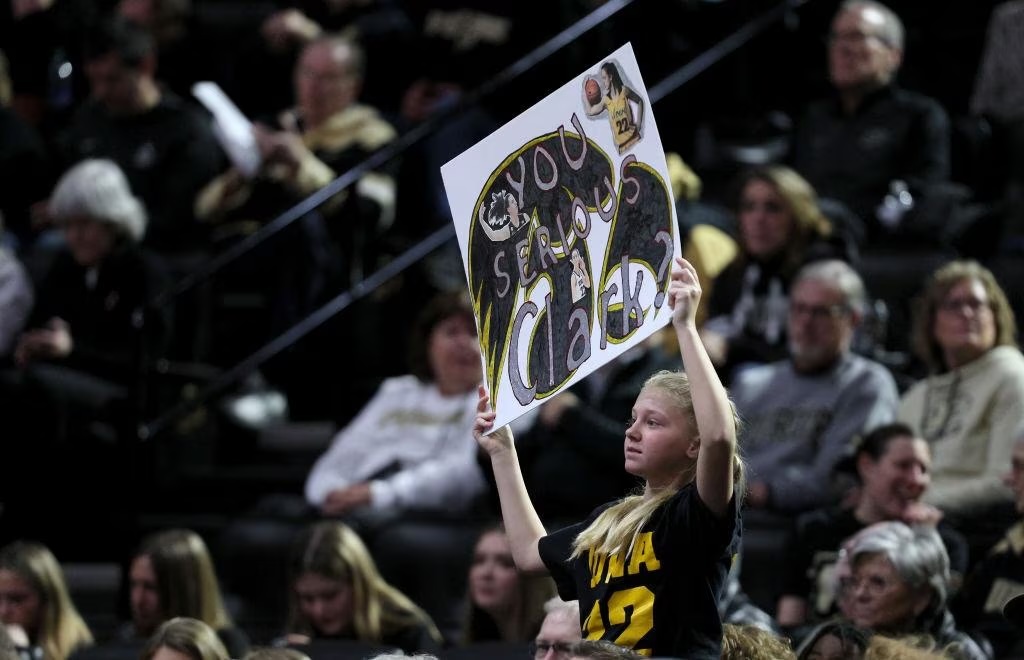The Women’s National Basketball Association (WNBA) is having a moment unlike any it has ever had before. The WNBA Draft in April sold out for its in-person event in minutes and had a record 2.47 million at-home viewers – a 307 percent increase from last year’s Draft. According to ESPN, WNBA games are being played at or near capacity crowds in their arenas and TV ratings are so high that this season has already had three of the five highest rated WNBA games ever to be broadcasted on ESPN and ABC. The broadcast of Caitlin Clark’s first professional game had the highest viewership for a WNBA game on the network, drawing a high of 2.3 million viewers. Despite a technological error that prevented the Chicago Sky vs. Minnesota Lynx from airing on traditional media, nearly 500,000 people tuned in after a fan at the game began livestreaming on X – and now has over 2.5 million views. Considering that the average viewership in the 2023 season was 627,000 viewers, the explosive growth of the WNBA is clear.
There’s no doubt that this attention is largely thanks to Caitlin Clark, who had a record breaking collegiate career at the University of Iowa and joined the WNBA as the first overall pick this spring. She brings the attention she gained in college with her to the WNBA – like the 18.9 million viewers that watched Iowa take on the University of South Carolina in the NCAA finals – as people want to follow the next stage of her career on the professional level.
The WNBA has an opportunity to use this newfound public interest to its advantage and make this increased attention the new norm. From a public relations perspective, there are a few strategies that the organization can employ to make that happen.
Emphasize the players
In public relations, one tactic that we often implement is showcasing a personal story to bring a human element to a pitch or broader campaign. While Clark is one of – if not the – biggest names in women’s basketball right now, she isn’t the only person bringing attention to the WNBA. Other rookies like Angel Reese and Kamilla Cardoso, and veteran players like A’ja Wilson, Alyssa Thomas, Kelsey Plum, and Brittney Griner are just a few additional players who have created new league fans. Working with these players to do press, having them as representatives of the WNBA at different charity or media events, and promoting them on owned media channels are great ways to showcase a wide range of talent and make the WNBA relatable to different viewers.
Be an advocate for more initiatives to bolster girls’ and women’s sports
With the rise in attention of the WNBA, there has also been increased focus on creating more opportunities – and equality – for women in sports in general. Additionally, there has also been more awareness toward the lack of opportunity and encouragement young girls have to participate in sports.
The WNBA already supports a few initiatives like the YMCA, Be Smart – Be Fit – Be Yourself, the Jr. WNBA, and others that aim to educate girls and women on the importance of physical fitness, encourage more girls to participate in sports, and take life lessons learned on the court and apply them to other aspects of life. As the WNBA continues to grow, it has a great opportunity to raise more awareness to these causes, as well as support other aligned organizations. The increased attention has shown young girls who watch and play sports that they, too, could one day be in the big leagues.
Engage in smart partnerships
The WNBA is using the momentum to partner with one of the biggest names in sports, ESPN, to air WNBA games all season long. It also partnered with DICK’s Sporting Goods to launch a girls’ apparel collection and increase visibility of women’s sports, and utilized a few of the league’s best players in a partnership with SKIMS for an advertising campaign – opening up the WNBA to huge markets it might not have reached otherwise. The organization can use this momentum to engage in additional partnerships with other key organizations to elevate its own platform and solidify its place as a leader in professional sports.
As an example of a potential future partnership, knowing that WNBA’s players will also most likely comprise the USA Women’s Basketball team at the summer Olympics this year, the WNBA could pursue a partnership with the broadcast station hosting the Olympics, NBC, to use players in advertisements for the Games. It could also work with the International Olympic Committee to draw more attention to the WNBA on an international level and spark interest from players in other countries to pursue a professional career in the U.S.
The WNBA is poised to continue growing and gaining new fans, which will lead to more revenue for the organization and ultimately the ability to expand the number of teams in the league and pay its players higher wages (READ: close the wage gap often seen between men’s and women’s sports). Having more players and teams would bring in more money, and, in the long run, keep this cycle going to the WNBA’s benefit. Utilizing the right public relations strategies to achieve these goals and more will ensure that the WNBA’s future is a slam dunk.



